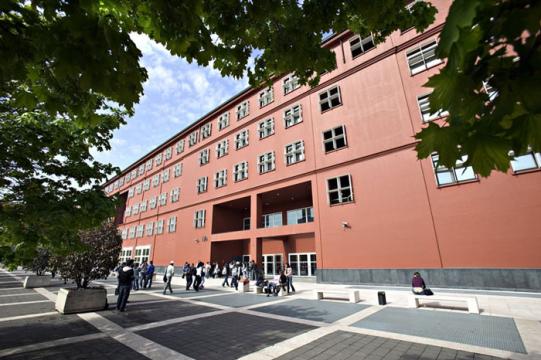
Lunedì 26 febbraio 2024, ore 14.00 Sala Lauree Psicologia, U6 (3° piano)
Irene Ronga, Università di Torino
'Aesthetic appreciation an implicit learning: EEG studies on newborns, adult and older participants'
Four out of five adults exhibit an aesthetic preference for consonant sounds over dissonant ones. EEG Mismatch Negativity (MMN), a well-validated index of implicit learning processes, is also enhanced for preferred consonant sounds compared to non-preferred dissonant sounds. Previous studies have suggested that this alignment between aesthetic preference and enhancement in implicit learning may indicate an evolutionary neural tuning toward the processing of consonant inputs. However, whether this effect is maintained across the lifespan remains unknown. To investigate the neural tuning for consonance, we conducted a series of EEG studies in newborns and a group of healthy elders. Twenty-two full-term healthy newborns (EXP.1) and twenty healthy elders (age: 73.1±5.2; EXP.2) were exposed to a sequence of auditory stimuli while recording their EEG. Our paradigm consisted of sounds varying in frequency (high and low pitch) and consonance level (fifth-consonant and tritone-dissonant intervals). Participants underwent six runs of the auditory paradigm. Three runs were exclusively composed of consonant sounds, while the remaining runs were selectively composed of dissonant sounds. Within each run, standard-repeated sounds alternated with deviant novel sounds. We then computed the MMN, i.e., deviant minus standard responses, separately for consonant and dissonant sounds.
Results indicate that more consonant sounds elicited a significantly larger MMN than dissonant sounds in both newborns (EXP.1) and elderly (EXP.2) participants. Overall, our data show that, in both age groups, electrophysiological indexes of implicit learning are enhanced for consonant sounds. These findings seem to confirm the presence of an evolutionary neural tuning toward the processing of consonant inputs, which is present a few hours after birth and is preserved in aging. The present results might open up possibilities for developing clinical and educational applications to enhance memory and learning during neurodevelopment and physiological aging.
Tutti gli interessati sono invitati a partecipare.
Per informazioni: Lucia Sacheli. lucia.sacheli@unimib.it